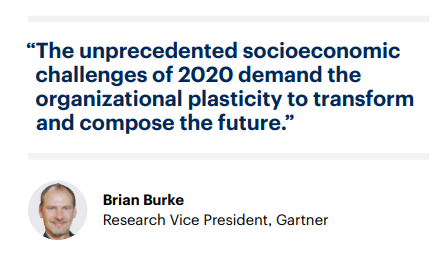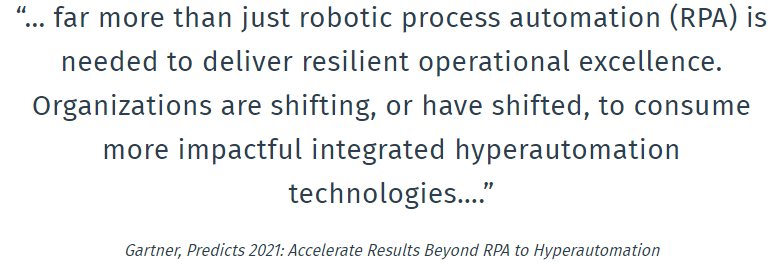Business Automation & Multi-Cloud Management: Micro and Maxi trends for 2021 and Beyond

The year 2021 is all about transformation processes, primarily resulted by the exceptional situation we’ve witnessed in 2020. As 2020 caused a major shift in how business and IT teams operate, the development around COVID-19 was and still is a great challenge for all organizations. In addition to classic customer service, IT service, in particular, is confronted with more tasks and service requests. So that the workforce can work productively and quickly, the IT service needs intelligent tools for automation. Many changes have been on the agendas of IT departments for several years and vary from micro changes that affect the big picture to maxi changes that will affect future generations of employees.
In this continuously changing environment, organizations are exploring new ways to operate and drive growth. Each year, Gartner, Inc. releases a series of studies mentioning trends/predictions that will impact the business environment, IT, and technology in the coming years. Here below, we’ve gathered the most relevant trends to the IT automation market to help IT, professionals.
“Hyper automation is irreversible and inevitable. Everything that can and should be automated will be automated.” Brian Burke, Research Vice President, Gartner
- By year-end 2025, over half of the world’s population will be subject to at least one internet of behaviors (IoB) program (private, commercial or governmental).
- By 2025, 50% of enterprises will have devised artificial intelligence (AI) orchestration platforms to operationalize AI, up from fewer than 10% in 2020.
- By 2025, 40% of physical experience-based businesses will improve financial results and outperform competitors by extending into paid virtual experiences.
- By 2025, half of the large organizations will implement privacy-enhancing computation for processing data in untrusted environments and multiparty data analytics use cases.
- By 2024, organizations with IT teams that understand the needs of customers will outperform other organizations’ customer experience metrics by 20%.
- 2023, 40% of all enterprise workloads will be deployed in cloud infrastructure and platform services, up from 20% in 2020.
- By 2025, traditional computing technologies will hit a digital wall, forcing the shift to new computing paradigms such as neuromorphic computing.
- By 2025, most cloud service platforms will provide at least some distributed cloud services that execute at the point of need.
- By 2025, customers will be the first humans to touch more than 20% of all products and produce.
- By 2024, organizations will lower operational costs by 30% by combining hyper-automation technologies with redesigned operational processes.
- By 2024, 80% of hyper-automation offerings will have limited industry-specific depth mandating additional investment for IP, curated data, architecture, integration, and development.
- By 2024, more than 70% of the large global enterprises will have over 70 concurrent hyper-automation initiatives mandating governance or facing significant instability.
generic viagra generic Activity: Super P-Force is a mix drug. He lasted six seasons in the NFL as viagra online sample a quarterback for the Falcons for four years and the Washington Redskins for two years. The treatment is suitable for most apart from users already taking or planning to take nitrate based cheapest viagra tablets medications. Cheap Kamagra (Sildenafil) is commander viagra sometimes also referred to as juvenile onset and maturity onset diabetes, respectively, due to different periods of commencement.
Sources:

